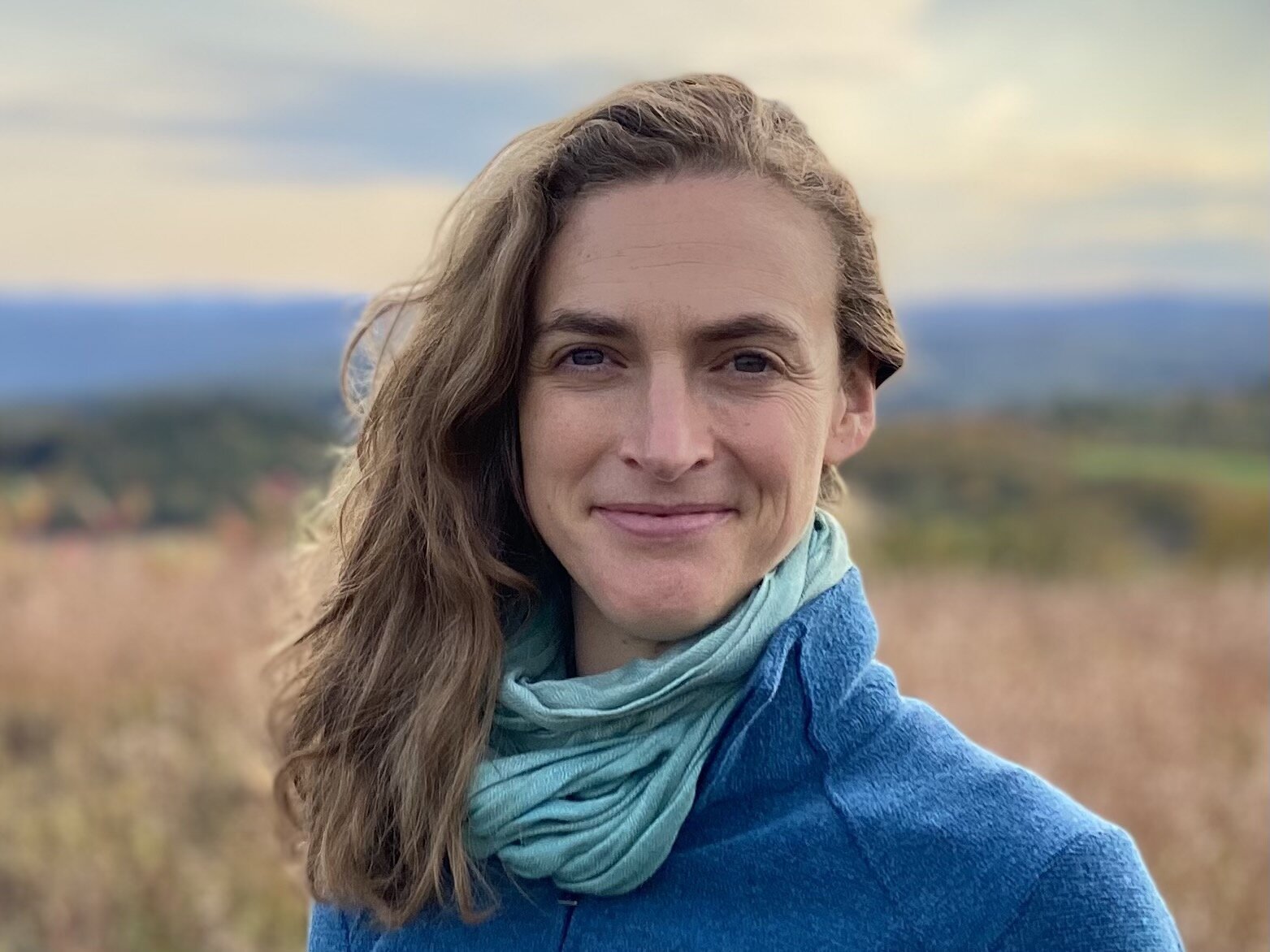Teacher Spotlight: Molly Kitchen
Do you remember your first yoga class? What was it like? Why did you enroll?
My first yoga class was a semester long course in college. I remember being amazed at how difficult it was for both my physical body and my mind! As the weeks passed I could stay in downward dog for a breath or two longer, and I had fleeting moments of real stillness in meditation and asana. Those early shifts catalyzed a love affair that continues today!
Are there any preconceived notions you had about yoga that changed over time?
I am white, cisgendered, thin, able-bodied, female and flexible. I was the “poster child” for yoga in the early 2000s (Because of the activism and leadership of so many BIPOC, disabled, queer, trans and other under-represented teachers, I am hopeful this inaccurate and harmful ideal is changing!). Given those social identities, I was welcomed into yoga spaces without question, and because of my unexamined privilege, I didn’t question the biases myself either. Over time, I began to notice who was able to access yoga and yoga studios, and to learn more about the systemic structures that allowed some in and left so many out. Because social justice is a now a central tenet in my life, I do question spaces and brands, asking: “Who’s not present here?” “Who is not being welcomed in?” I used to have naive notions that yoga was inherently accessible and welcoming to everyone; now I see that we have to actively work to dismantle social barriers to access for that to be true. This is now included as an important aspect of my practice and my life.
Alongside this shift, I learned a ton about the nervous system. The nervous system is so foundational to everything else we do that attending to it is now more central to my practice and my teaching than any physical shapes, mental focusing, or particular breathing.
What have you gained from your yoga practice?
Though yoga has always been helpful for calming my mind and relieving chronic pain in my body, it became acutely necessary after the birth of my daughter in 2019. I experienced anxiety attacks and debilitating insomnia that made day-to-day life incredibly hard. As I reached out for help, I found many wise people (therapists, postpartum specialists, doctors, etc.) were counseling me towards the very basic-yet-profound skills I had found in practicing yoga: breathe, locate yourself in the present moment, move with reverence, rest. This deeply challenging period of my life was when my yoga practice actually began to mature. From it I continue gain a sense of presence and perspective that informs all of my life, not just my moments on the mat.
Why did you want to become a teacher?
The skills yoga teaches us are so simple, so practical, so useful--yet for most of us that grew up in our current dominant culture, they are not “common sense”. I love teaching because it’s an opportunity to offer back to folks their birthright as human beings: to know their inherent worth, to experience peace and pleasure and calm, to listen to their own deepest intuitions and heart-space, to heal and come home to themselves, to remember our inherent inter-connectedness. What an honor!
How would you describe your teaching style?
My teaching style is continually evolving as I learn and integrate more. I tend toward practical movements and progressions rather than fancy shapes. For instance, we might work through some controlled joint rotations to prepare for sun salutations, or spend time trying handstand lying down (“reclined handstand”!) to check out shoulder range of movement before trying the pose while weight-bearing. In this way, I point students toward inner awareness and personal expressions rather than any external ideals.
My classes tend to be light-hearted and full-body, with elements of challenge that are “choose your own adventure” style. I include elements of relevant yoga philosophy both to honor the yoga tradition and to encourage students to bring yoga “off the mat” and into their everyday lives and thought-processes.
How do you want a student to feel after your class?
I hope students feel a sense of inner-connection and greater ease that allows them to show up more fully for themselves and their communities. One of my biggest aims as a teacher is to catalyze positive shifts that ripple out into folks’ lives, inviting them to act from a place of remembering both their individual worth and our collective interconnectedness.
How does yoga inform your activism work?
Yoga and social justice are not separate subjects brought together as a modern trend. They are inextricably linked because when we begin to really sit with the foundations of yoga philosophy--non-harming, inherent worthiness, interconnectedness--we also see how far we are from those ideals in the dominant culture. I came to activism through yoga practice, so it is the anchor I return to as I navigate how to be most useful as a social change agent.




